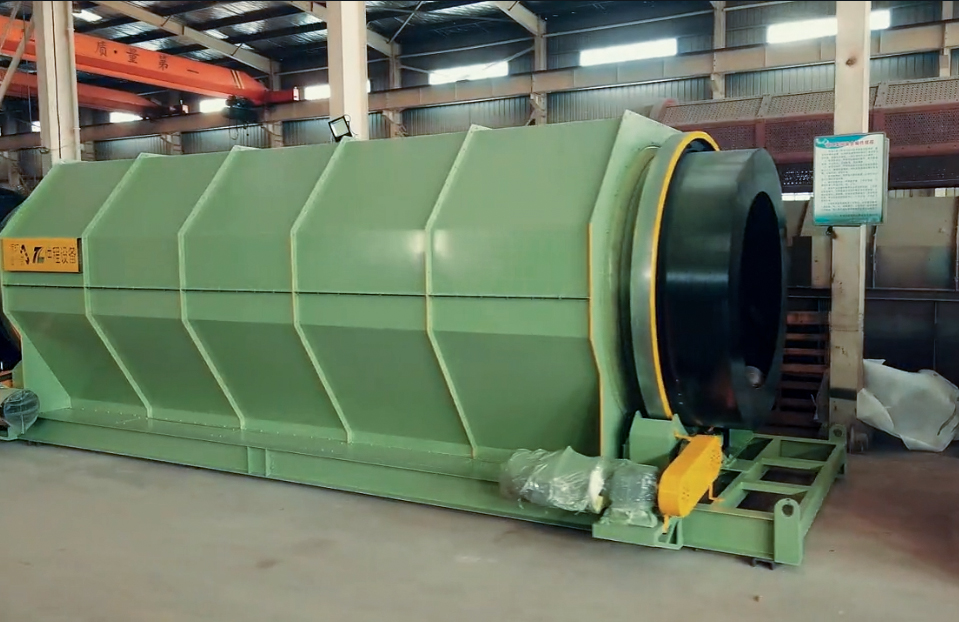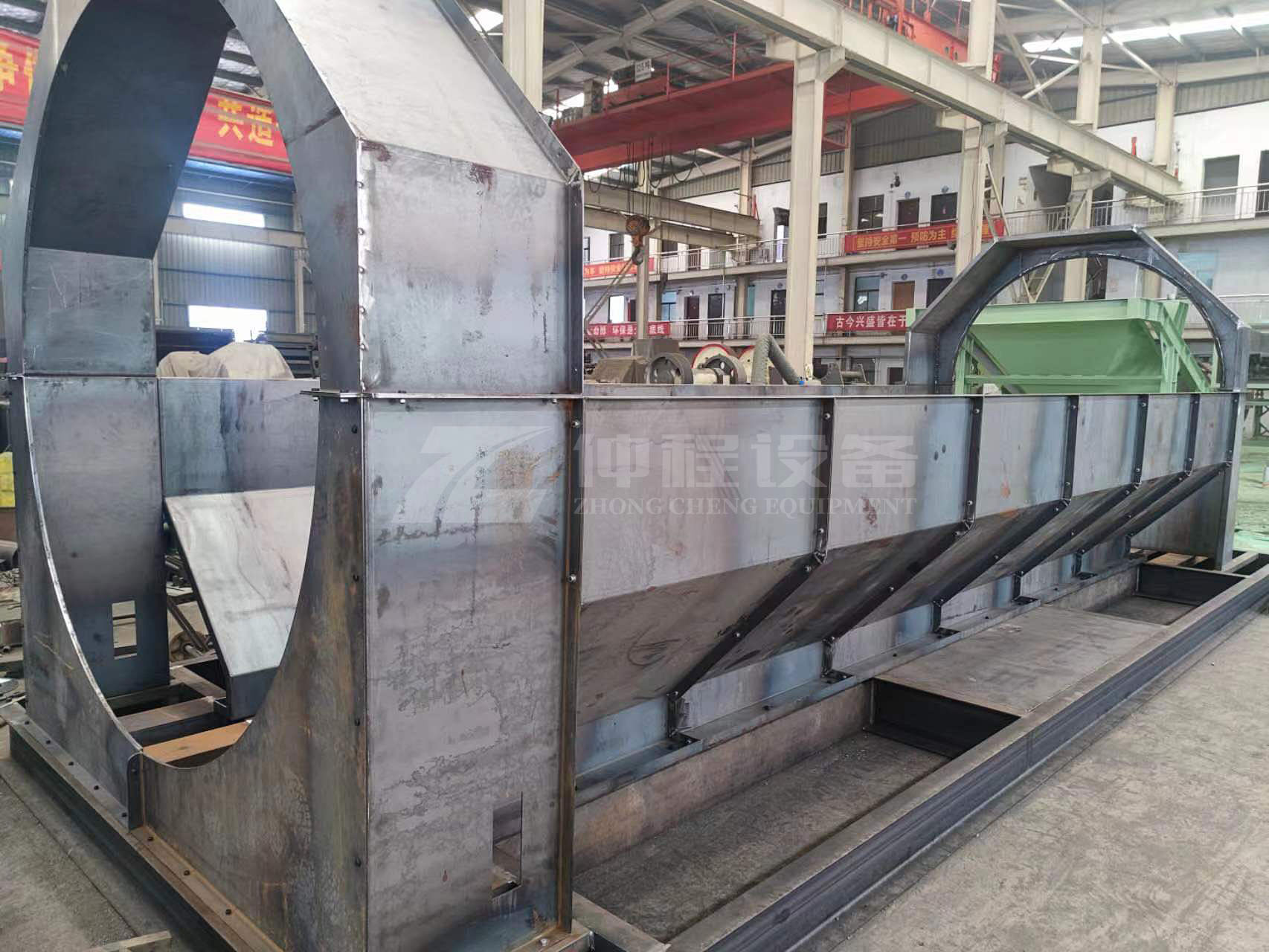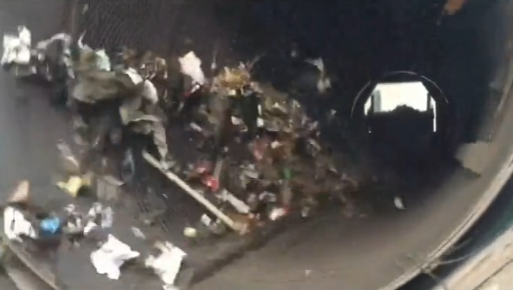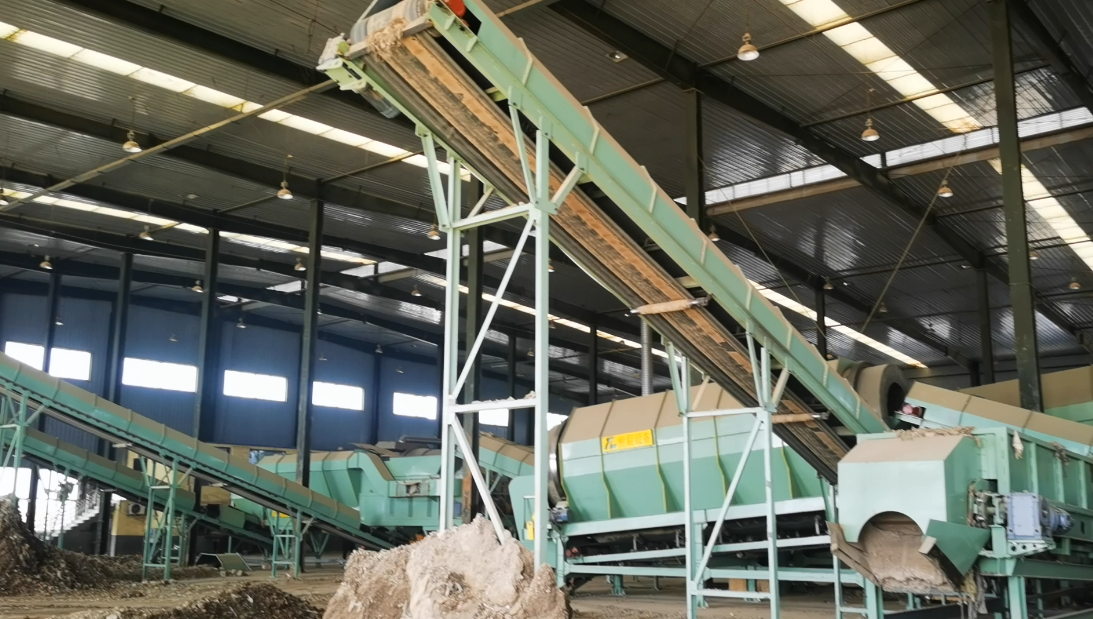The Role of Trommel Screen Machines in Waste Management
Introduction
In the contemporary world, where waste generation has reached unprecedented levels, effective waste management and recycling have become crucial to maintaining environmental balance and ensuring sustainability. One of the most efficient and widely used tools in this arena is the trommel screen machine. This machine has revolutionized the way waste is processed, facilitating the separation of different materials and significantly reducing the amount of waste that ends up in landfills.
A trommel screen machine is essentially a large, rotating cylindrical drum with perforated sides. As waste materials are fed into the drum, the rotation causes the materials to be sorted based on size. Smaller materials pass through the perforations, while larger materials continue to be processed further down the drum. This simple yet effective mechanism allows for the efficient separation of various waste components, such as plastics, paper, glass, and metals, enabling more effective recycling and resource recovery.
The importance of trommel screen machines in waste management cannot be overstated. They are pivotal in processing mixed waste streams, enhancing the efficiency of recycling operations, and reducing the environmental footprint of waste disposal activities. By separating recyclables from non-recyclables, trommel screens not only help in conserving natural resources but also play a significant role in reducing greenhouse gas emissions associated with waste decomposition in landfills.

Chapter 1: Introduction to Waste Management and Recycling
Waste management is a critical issue facing modern society. With the global population continuously growing and consumer habits leading to increased waste production, managing this waste effectively has become a top priority for governments, businesses, and communities worldwide. Recycling is a fundamental component of waste management, aimed at converting waste materials into reusable resources to reduce the consumption of fresh raw materials, energy usage, and environmental impact.
Recycling involves several steps, including collection, sorting, processing, and manufacturing. The sorting phase is particularly crucial as it determines the efficiency and effectiveness of the entire recycling process. This is where trommel screen machines come into play, offering a robust solution for separating different types of waste materials based on their size and composition.
The concept of recycling dates back to ancient times when resources were scarce, and reuse was a necessity. However, the modern recycling movement gained momentum in the 20th century, driven by increasing awareness of environmental issues and the need for sustainable resource management. Today, recycling is a global industry, supported by advanced technologies and sophisticated machinery designed to handle diverse waste streams.
Chapter 2: The History and Evolution of Trommel Screen Machines
The development of trommel screen machines can be traced back to the early 20th century when industrial processes began to demand more efficient ways of sorting and processing materials. The first trommel screens were relatively simple devices, primarily used in mining operations to separate valuable minerals from ore. Over the decades, these machines have undergone significant advancements, evolving into the high-performance equipment used in modern waste management and recycling facilities.
Early trommel screens were manually operated and relied on basic mechanical principles. As technology progressed, these machines became more automated and sophisticated, incorporating advanced features such as variable speed controls, automated feeding systems, and improved drum designs to enhance sorting efficiency and accuracy. Today, trommel screens are equipped with state-of-the-art technologies, including sensors, data analytics, and remote monitoring capabilities, making them integral components of smart waste management systems.
Chapter 3: How Trommel Screen Machines Work
The operation of a trommel screen machine is based on a simple yet highly effective principle. Waste materials are fed into a rotating cylindrical drum, which is perforated with holes of varying sizes. As the drum rotates, the waste materials are lifted and dropped, causing smaller particles to fall through the perforations while larger particles are carried further along the drum. This process effectively sorts the waste by size, allowing for the efficient separation of different materials.
The design and configuration of trommel screens can vary depending on the specific application and material being processed. Key factors that influence the performance of a trommel screen include drum diameter, drum length, hole size and shape, rotation speed, and feed rate. By optimizing these parameters, operators can achieve high throughput and precise sorting of waste materials, improving the overall efficiency of recycling operations.

Chapter 4: Benefits of Using Trommel Screen Machines in Recycling Facilities
The adoption of trommel screen machines in recycling facilities offers numerous benefits. One of the most significant advantages is their ability to handle a wide range of materials, from household waste and construction debris to industrial by-products and organic waste. This versatility makes trommel screens ideal for various recycling applications, enhancing the overall efficiency of waste processing operations.
Trommel screen machines also contribute to cost savings by reducing the need for manual sorting and minimizing contamination in the sorted materials. By automating the sorting process, these machines help reduce labor costs and improve the quality of the recyclables, making them more valuable in the market. Additionally, trommel screens are designed to be durable and low-maintenance, ensuring reliable operation and minimizing downtime in recycling facilities.
Chapter 5: Different Types of Trommel Screen Machines
Trommel screen machines come in various types and configurations, each designed to meet specific needs and applications. Some of the common types of trommel screens include stationary trommel screens, mobile trommel screens, and portable trommel screens. Stationary trommel screens are typically used in large-scale recycling facilities where high throughput and continuous operation are required. Mobile and portable trommel screens, on the other hand, offer flexibility and convenience, allowing operators to move the equipment to different locations as needed.
Chapter 6: Applications of Trommel Screen Machines in Various Industries
While trommel screen machines are widely used in waste management and recycling, their applications extend beyond these industries. They are also employed in mining, agriculture, forestry, and construction, where efficient material sorting and separation are essential. In the mining industry, trommel screens are used to separate valuable minerals from ore, while in agriculture, they help in processing organic waste and compost. In construction, trommel screens are used to sort construction and demolition debris, facilitating recycling and resource recovery.

Chapter 7: Innovations and Technological Advancements in Trommel Screen Machines
The field of trommel screen technology has seen numerous innovations and advancements in recent years. Manufacturers are continually developing new features and enhancements to improve the performance, efficiency, and sustainability of these machines. Some of the latest innovations include the integration of artificial intelligence and machine learning algorithms for real-time monitoring and optimization, the use of advanced materials and coatings to enhance durability and reduce wear, and the implementation of energy-efficient designs to minimize environmental impact.
Chapter 8: Case Studies of Successful Implementations
This chapter will present several case studies showcasing successful implementations of trommel screen machines in various waste management and recycling facilities. These case studies will highlight the challenges faced, solutions implemented, and the positive outcomes achieved through the adoption of trommel screens. By examining real-world examples, readers will gain insights into the practical applications and benefits of these machines in different contexts.
Chapter 9: Environmental Impact and Sustainability
The environmental impact of trommel screen machines is a critical consideration in waste management and recycling. By facilitating the efficient separation and processing of waste materials, trommel screens contribute to reducing landfill waste, conserving natural resources, and lowering greenhouse gas emissions. This chapter will explore the sustainability benefits of using trommel screen machines and discuss how they align with broader environmental goals and initiatives.
Chapter 10: Maintenance and Operational Best Practices
To ensure the optimal performance and longevity of trommel screen machines, proper maintenance and operational best practices are essential. This chapter will provide detailed guidelines on routine maintenance, troubleshooting common issues, and implementing best practices to maximize the efficiency and reliability of trommel screens. Topics covered will include regular inspections, cleaning and lubrication, component replacement, and safety protocols.
Chapter 11: Challenges and Solutions in Using Trommel Screen Machines
While trommel screen machines offer numerous benefits, they also come with certain challenges. This chapter will address some of the common issues encountered in using trommel screens, such as material clogging, wear and tear, and operational inefficiencies. It will also present practical solutions and strategies to overcome these challenges, ensuring smooth and efficient operation in waste management and recycling facilities.
Chapter 12: Future Trends in Waste Management Technology
The future of waste management technology is poised for significant advancements, with trommel screen machines playing a central role. This chapter will explore emerging trends and innovations in the field, such as the integration of smart technologies, the development of more efficient and compact designs, and the increasing focus on sustainability and circular economy principles. By staying abreast of these trends, industry professionals can better prepare for the future and leverage new opportunities for improvement.

Chapter 13: Cost-Benefit Analysis of Trommel Screen Machines
Investing in trommel screen machines requires careful consideration of the costs and benefits. This chapter will provide a comprehensive cost-benefit analysis, examining the initial investment, operational expenses, and potential savings associated with using trommel screens. By evaluating the financial implications and long-term benefits, decision-makers can make informed choices about implementing these machines in their
-
 Trommel screenTrommel screen, also known as drum screens, are widely used in various industries for sorting and separating materials.Get Quote
Trommel screenTrommel screen, also known as drum screens, are widely used in various industries for sorting and separating materials.Get Quote -
 Crop straw double shaft shreddApplications:Biomass Energy Production: Shredded straw can be used as a feedstock for bioenergy plants to produce electricity or heat.Livestock Feed: Reduced-si...Get Quote
Crop straw double shaft shreddApplications:Biomass Energy Production: Shredded straw can be used as a feedstock for bioenergy plants to produce electricity or heat.Livestock Feed: Reduced-si...Get Quote -
 Zhongcheng Air Drum SeparatorAir drum separators effectively separate lightweight materials (e.g., plastics, paper) from heavier materials (e.g., metals, glass). This high efficiency is cru...Get Quote
Zhongcheng Air Drum SeparatorAir drum separators effectively separate lightweight materials (e.g., plastics, paper) from heavier materials (e.g., metals, glass). This high efficiency is cru...Get Quote
-
2024-07-09Recycling Balers-Safe,Easy-To-Use and affordableThe operating principle of a strapping machine primarily involves the following steps:1.Item Positioning:Firstly, the item to be strapped must be placed accurat...
-
2023-01-12WindshifterWindshifter (Air Drum Separator ) is the ideal solution for separating all kind of waste types into two fractions, heavy and light. The robust construction and ...
-
2024-05-18Hydraulic Cone CrusherHydraulic Cone Crusher integrates machinery, hydraulic pressure, electrics, automation, and intelligent control, which can be used for medium crushing, fine cru...
-
2023-01-18RDF Making MachineRDF (Refuse Derived Fuel) making machine is a specialized equipment used in waste management and energy recovery processes. Its primary function is to convert v...
-
2023-01-12Waste FeederWaste feeder was specially designed to optimize municipal solid waste sorting systems. The Drum Feeder ensures that your sorting system, baler or shredder has a...



